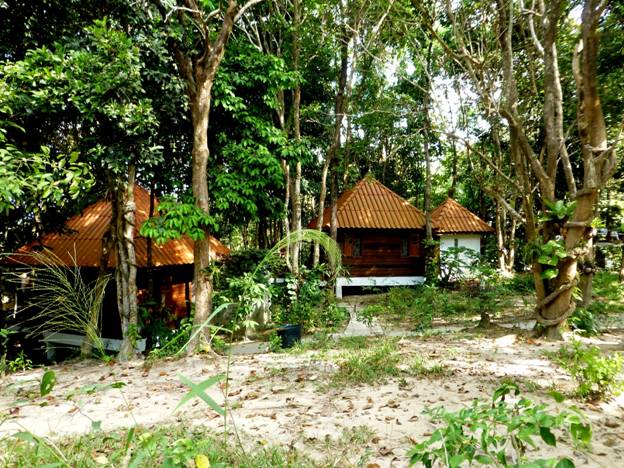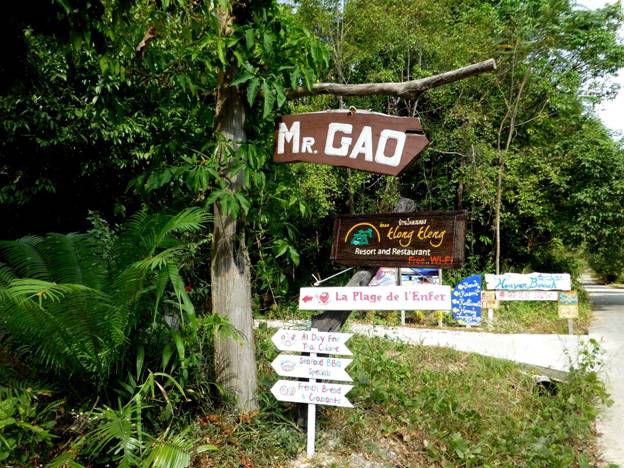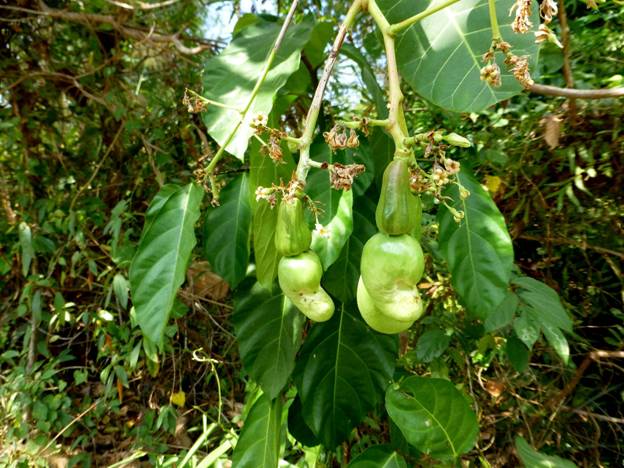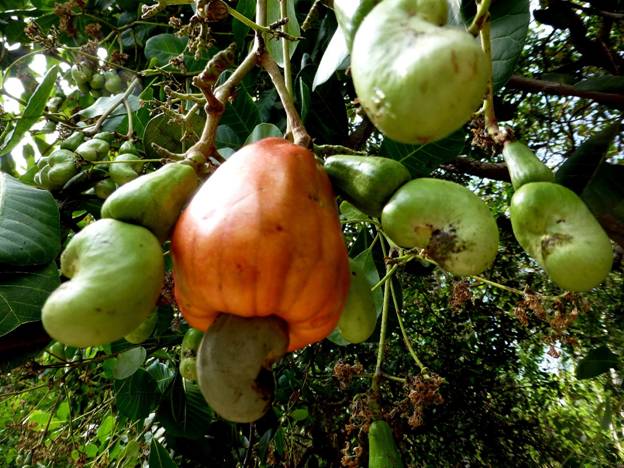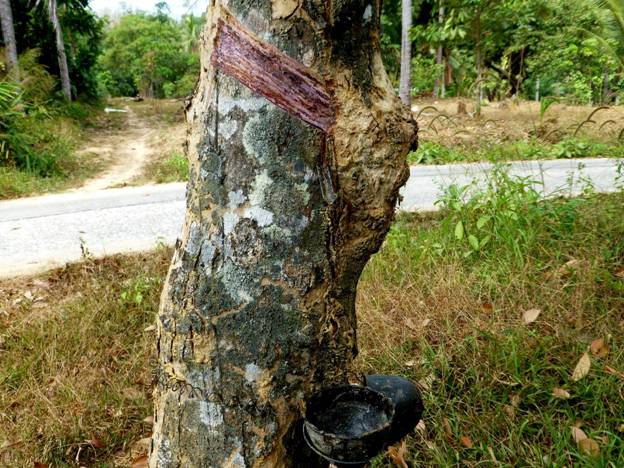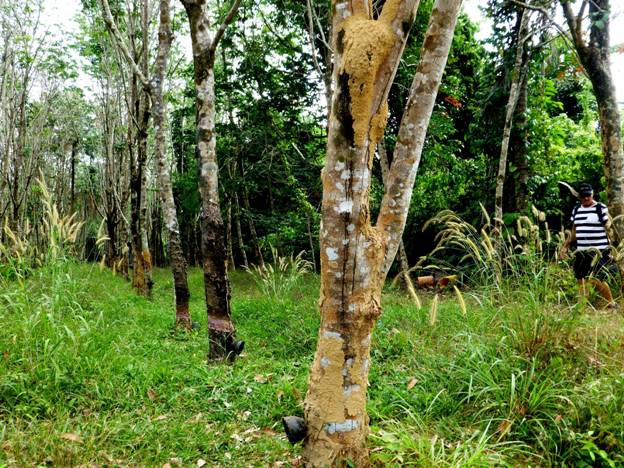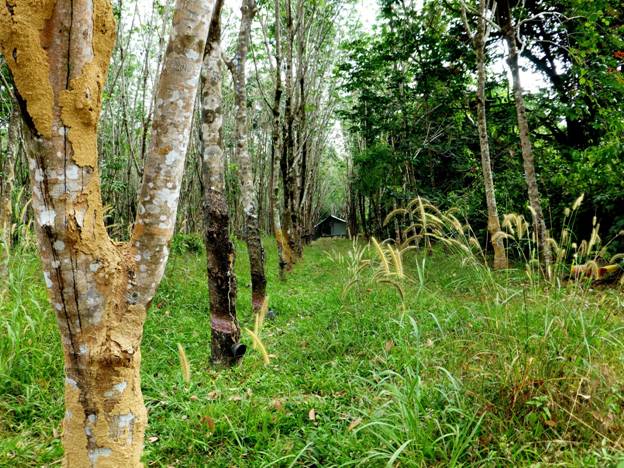Photos: Part 1 > Walking to the port town on this island of Ko Phayam

Our Morning Walk into the Village We were off to the village, Marian and David were our tour guides, as they had been here last year – so they had lots of local knowledge.
I had mentioned Mr. GAO’s cement road that led to the main cement road. Lots of plants and flowers to enjoy along the way.
Looking at the restaurants from the beach you have no idea there are cabins in the woods for the guests to sleep. The electricity is on during certain times of the day and many cabins do not have electricity, so this is a great place to get away from our technology filled lives.
Life is much simpler as you can see, no washing machines just large buckets and big vats to hold water.
We have not seen a cashew tree, only the finished product, so it was very interesting to see how they grow. The Cashew tree is a tropical evergreen, looking at the leaves, they don’t look like our evergreens and the cashew nut is actually a seed. The photo above shows a new apple and seed. The cashew nut hangs from the apple, in this photo the nut is larger than the apple.
Here we have a cashew nut and apple ready to be harvested, the apple is now much larger than the nut, the apple although pear shaped is rosy in colour when ripe. The apple can be processed to make juice or a liqueur. I’m always impressed how every bit of plants and trees are used, nothing left to waste. It is always interesting to find out about the defence mechanisms plants have to protect themselves from too many predators. The outer shell of the cashew contains anacaroic acid which is similar to the toxin found in poison ivy. The seed must be roasted to destroy the toxin, they roast the nuts or seed outdoors as the smoke contains urushiols droplets which can cause severe reactions by irritating the lungs, luckily because of the balmy weather most cooking and roasting is done outdoors. The island also has rubber trees, the trees we saw had lost their leaves, they do not harvest the trees for two months during the dry season, so we were either too early or too late, anyway at least we could see the cut they make into the tree to get the latex. The cut is into the first layer which contains channels that contain the latex. The trees can be harvested for 28 years then they have to plant new trees. This was a very small plantation, but still very interesting to see tapped rubber trees up close.
They make the cut with a very sharp knife or to make the vertical channels to allow the latex to drip into the cup they use a carpenter’s tool. This tree had a spigot instead of the more labour intensive vertical channels.
At the end of the row of trees the plantation hut!
As you walk along the cement road you could see small homes nestled amongst the palms, you could almost miss them. |


